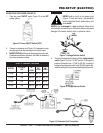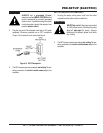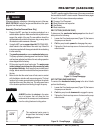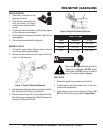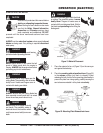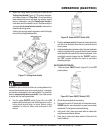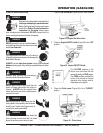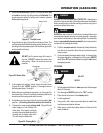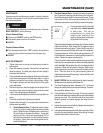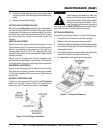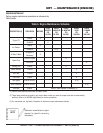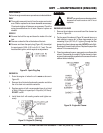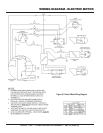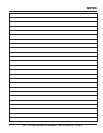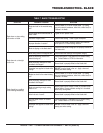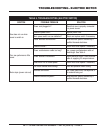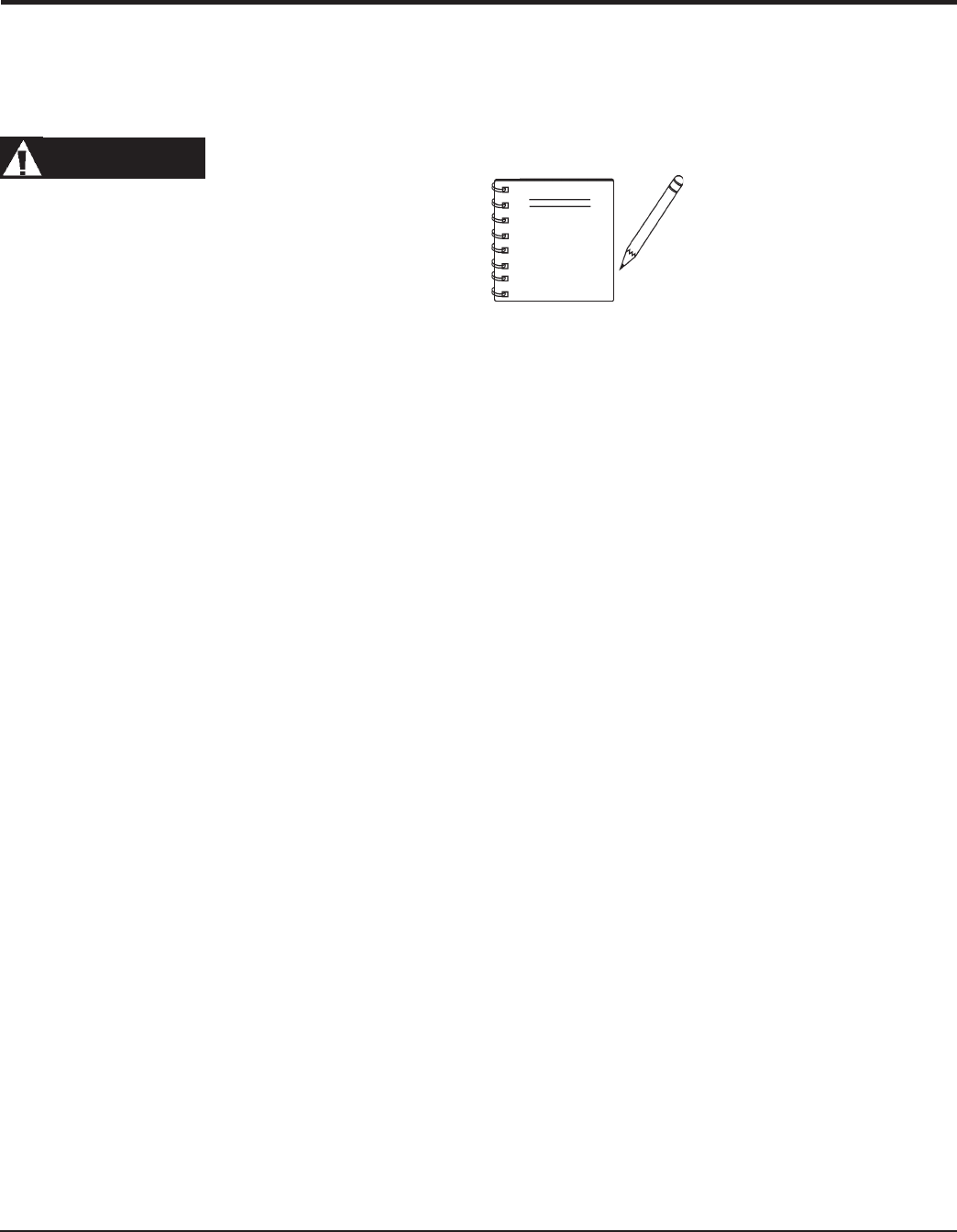
PAGE 30 — MP1 — OPERATION AND PARTS MANUAL — REV. #3 (03/29/10)
A good preventive maintenance program of regular inspection
and care will increase life and improve the performance of the
saw and cutting blades.
WARNING
MAINTENANCE
MAINTENANCE (SAW)
NOTE
Whenever cleaning, adjusting, or lubricating any part of the saw,
MAKE CERTAIN to do the following:
Electric Powered Saws
■
Place power ON/OFF switch to the OFF position.
■
Disconnect power cord from AC source.
■
NEVER
Gasoline Powered Saws
■
Turn the engine switch to the "OFF" position, disconnect the
spark plug wire and secure it away from the spark plug.
■
NEVER
It is very important that the jackshaft
and blade arbor
remain parallel
to each other. This can be
accomplished by using the
adjusting bolt located on the
engine mounting plate to help keep
the jackshaft from cocking.
Tighten the jackshaft bearing mounting bolts (4) that are located
under the weldment. Next, loosen the (4) engine mounting
bolts and remove the belt guard. Tighten the (2) nuts on the
engine tensioning bolts that are at the rear of the weldment.
Proper belt tension is 4-5 lbs. of force with approximately 1/8"
of belt deflection measured at a point halfway between the
pulleys. Tighten the engine mounting bolts.
Pull on the recoil to make certain everything moves smoothly
and freely. If the recoil pulls hard, the belts are probably adjusted
a little
too tight
. Belt tensions should be readjusted before
continuing. Attach the belt guards to the saw. Make certain
that the guards do not come in contact with the belts or each
other. There are slots in the guard mounting plates so
adjustments can be made if necessary. Tighten all bolts on the
guards and their mounts.
8. MAKE CERTAIN that the cutting head is aligned properly.
Misalignment can adversely affect blade life.
9. The blade flanges must have a diameter of 4". Undersize
flanges will reduce blade life and cause breakage. Therefore,
they should be replace at once.
10. Cutting blades must fit the arbor snugly. This is very important
with diamond blades as pounding will occur and serious blade
damage can result. If the arbor shoulder of the inner blade
flange is grooved from blade slippage, the flange must be
replaced.
11. Inspect the conveyor cart periodically. Replace the wood insert
and wheels when necessary.
12. Lubricate spindle bearings after each day's operation. When
dry cutting, grease bearings several times during the day's
operation to protect them from the dust.
BASIC MAINTENANCE
1. Tighten loose nuts or screws and replace any cracked or
broken parts.
2. Clean the machine frequently. Remove the belt guard and
clean the pulleys. The belts and pulleys will wear rapidly if
excessive dust builds up.
3. Clean the sludge that accumulates on the bottom of the water
tray at least once a day and refill with clean water. It may be
necessary to clean the tray out twice a day in heavy cutting.
The sludge is abrasive and will shorten the life of the water
pump and blades.
4. After each day's use, clean the sludge from the bottom of the
tray and run clean water through the water pump and water
hoses. This extends pump and blade life.
5. Lubricate the blade adjustment rod after every eight (8) hours
of use.
6. Check the spindle bolt for tightness periodically.
7. Keep the drive belts tight. It is very important to replace worn
belts as soon as possible.
A. Electric Powered Saws - To adjust belt tension, loosen
the four (4) motor mounting bolts and remove the belt
guard. Tighten the two (2) adjusting nuts on the back of
the motor plate to increase the tension. Proper belt
tension is 4-5 lbs. of force with approximately 3/16" of
belt deflection measured at a point midway between
the pulleys. Tighten the motor mounting bolts and re-
attach the belt guard.
B. Gasoline Powered Saws - To adjust belt tension, loosen the
four (4) jackshaft mounting bolts and remove the belt guard.
Screw the adjusting bolt back to increase the tension. Proper
belt tension is 4-5 lbs. of force with approximately 1/8" of belt
deflection measured at a point halfway between the pulleys.



